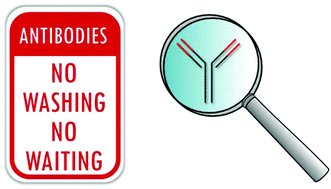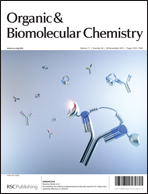No washing, less waiting: engineering biomolecular reporters for single-step antibody detection in solution
Abstract
Detection of antibodies is essential for the diagnosis of many disease states, including infectious diseases, autoimmune diseases and allergies. Most current antibody detection assays involve multistep detection schemes in which molecular recognition and signal generation are separate processes. A well-known example is the enzyme-linked immunosorbent assay (ELISA), which combines high sensitivity and specificity with strong signal amplification. However, ELISA and other heterogeneous methods require multiple, time-consuming washing and incubation steps, which limits their applicability in point-of-care diagnostics and high-throughput applications. In recent years, several new antibody detection strategies have been developed in which antibody binding and signal generation are integrated within a single biomolecular reporter. These strategies aim to rival ELISA in terms of sensitivity and specificity, while decreasing the time and effort required to perform an assay. Here, we review recent developments in this field according to their mechanism of action and discuss their advantages and limitations.


 Please wait while we load your content...
Please wait while we load your content...